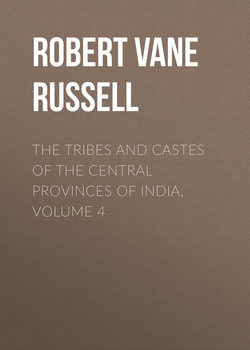Читать книгу The Tribes and Castes of the Central Provinces of India, Volume 4 - Robert Vane Russell - Страница 41
Part II
Articles on Castes and Tribes
Kumhār—Yemkala
Vol. IV
Kurmi
2. Functional character of the caste
ОглавлениеThere seems little reason to doubt that the Kurmis, like the Kunbis, are a functional caste. In Bihār they show traces of Aryan blood, and are a fine-looking race. But in Chota Nāgpur Sir H. Risley states: “Short, sturdy and of very dark complexion, the Kurmis closely resemble in feature the Dravidian tribes around them. It is difficult to distinguish a Kurmi from a Bhumij or Santāl, and the Santāls will take cooked food from them.”53 In the Central Provinces they are fairly dark in complexion and of moderate height, and no doubt of very mixed blood. Where the Kurmis and Kunbis meet the castes sometimes amalgamate, and there is little doubt that various groups of Kurmis settling in the Marātha country have become Kunbis, and Kunbis migrating to northern India have become Kurmis. Each caste has certain subdivisions whose names belong to the other. It has been seen in the article on Kunbi that this caste is of very diverse origin, having assimilated large bodies of persons from several other castes, and is probably to a considerable extent recruited from the local non-Aryan tribes; if then the Kurmis mix so readily with the Kunbis, the presumption is that they are of a similar mixed origin, as otherwise they should consider themselves superior. Mr. Crooke gives several names of subcastes showing the diverse constitution of the Kurmis. Thus three, Gaharwār, Jādon and Chandel are the names of Rājpūt clans; the Kori subcaste must be a branch of the low weaver caste of that name; and in the Central Provinces the names of such subcastes as the Agaria or iron-workers, the Lonhāre or salt-refiners, and the Khaira or catechu-collectors indicate that these Kurmis are derived from low Hindu castes or the aboriginal tribes.
53
Tribes and Castes of Bengal, art. Kurmi.
